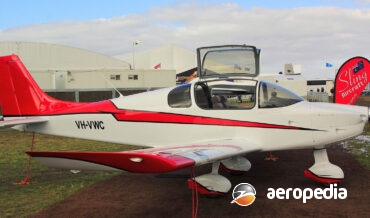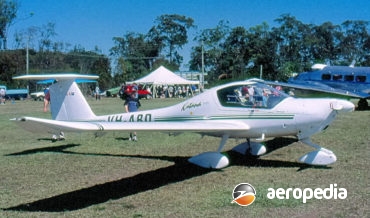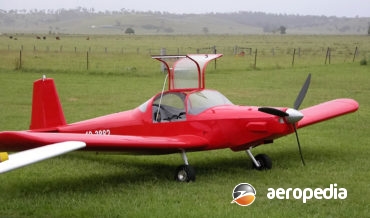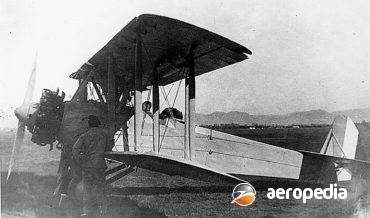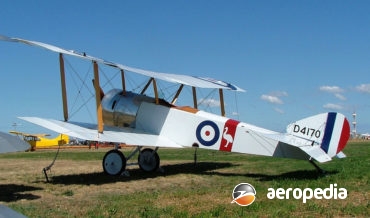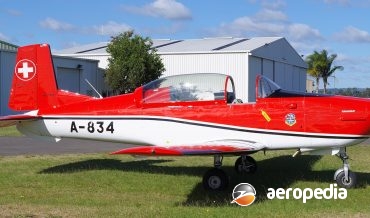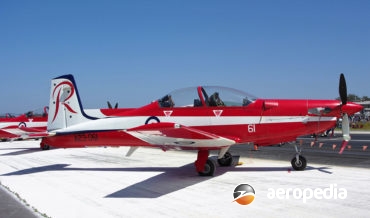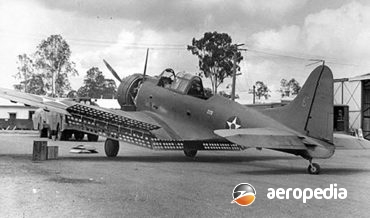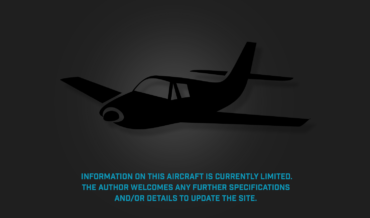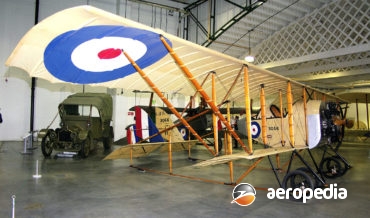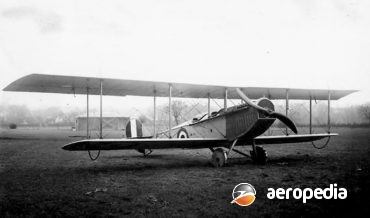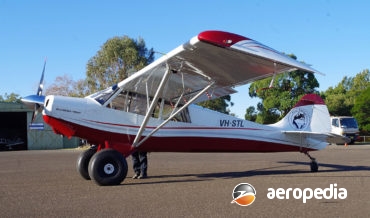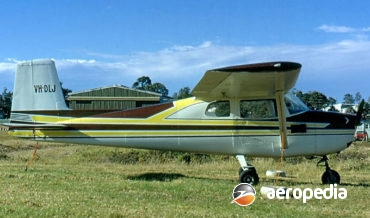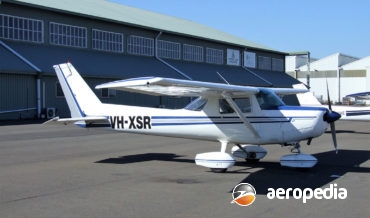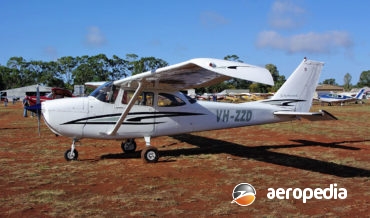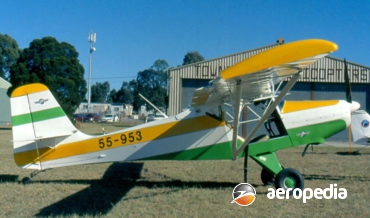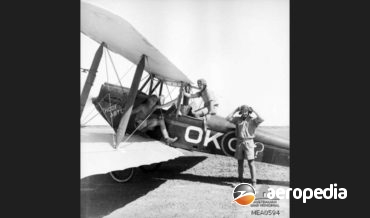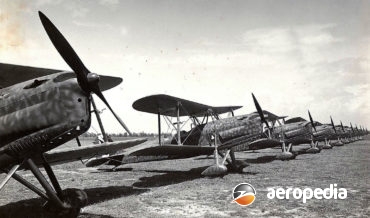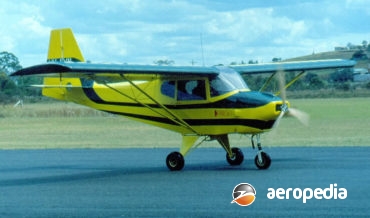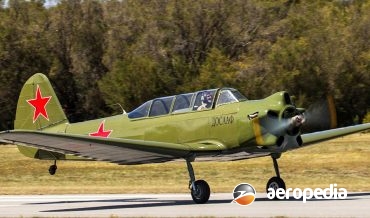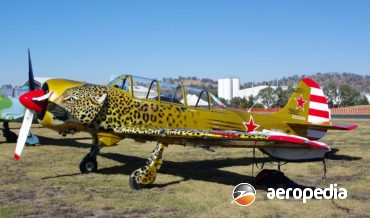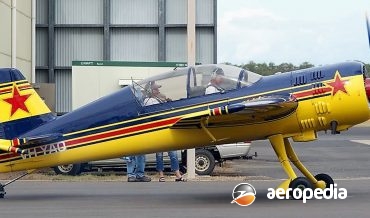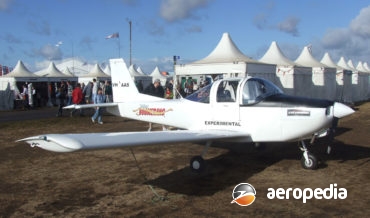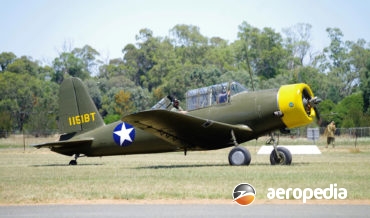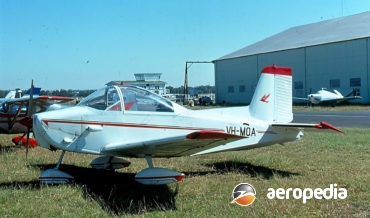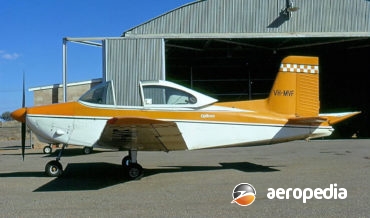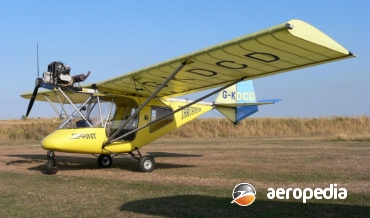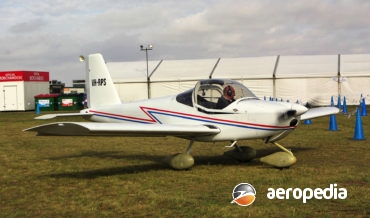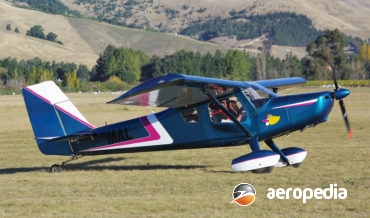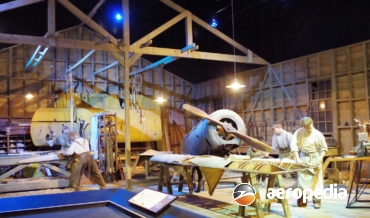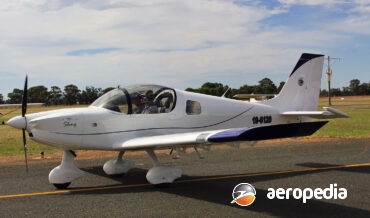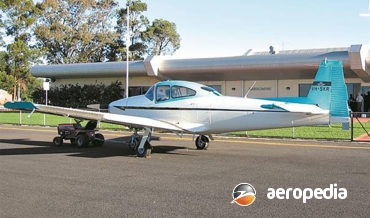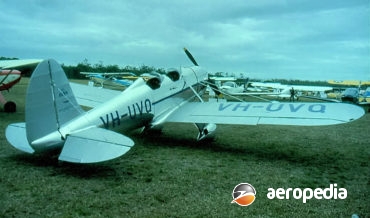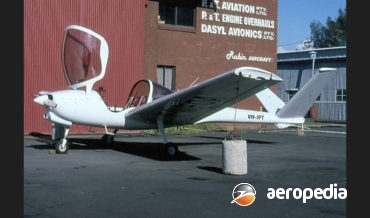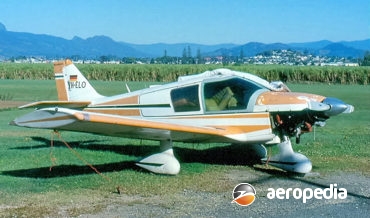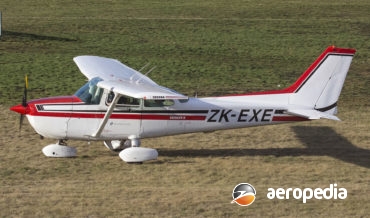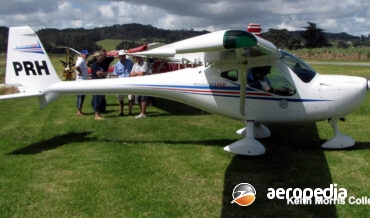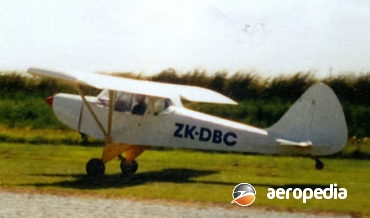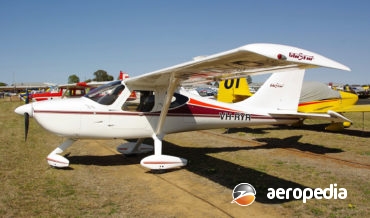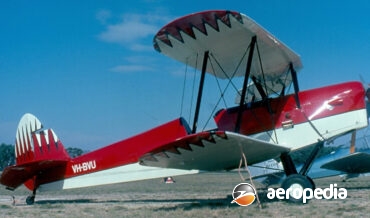All Contents
Contents
Following the success of the Sling 2 the company moved to the construction of a four-seat variant using similar production methods, offering the aircraft in ready-to-fly form or as a kit-built aircraft.
David C. Eyre
- March 23, 2020
The DV-20 Katana is a two-seat training and touring aircraft produced by HOAC Austria Flugzeugwerk at Weiner Neustadt, being basically a development of the Dimona and Super Dimona motor gliders.
David C. Eyre
- August 24, 2019
The Typhoon was designed by the late William ‘Bill’ Andiel and marketed by Homebuilt Aviation in northern New South Wales.
David C. Eyre
- August 24, 2019
In the late 1920s L J Wackett (later Sir) decided to design two aircraft for the RAAF, one to have a 149 kw (200-hp) radial engine, and the other to be a two-seat fighter with a 328 kw (440-hp) engine, to be known as the Warrigal I and Warrigal II.
David C. Eyre
- May 19, 2019
The Sopwith Pup was one of the most successful aeroplanes of the World War I era, having aesthetic appeal and delightful handling qualities.
David C. Eyre
- May 19, 2019
Pilatus Flugzeugwerke based at Stans. was established on 16 December 1939 to produce aircraft and one of its designs was the P-3 tandem two-seat trainer (HB-HON) first flown on 3 September 1953.
David C. Eyre
- May 19, 2019
The PC-9 was a development of the very successful PC-7 Turbo-Trainer, the latter having the flat-rated 410 kw (550 shp) PT6A-25 engine and the PC-9 having the PT6A-62, flat-rated at 709 kw (950 shp) for take-off.
David C. Eyre
- May 19, 2019
The A-24 series was designed as a dive-bomber variant of the Dauntless but did not achieve the fame of that aircraft and, after a number of not particularly successful operations, was relegated to the training and support roles.
David C. Eyre
- May 19, 2019
In the late 1930’s the RAAF was operating a small fleet of Supermarine Seagull V biplanes for reconnaissance, air-sea rescue, and general operations and was having problems keeping the aircraft airworthy. The wings were built of metal and with operations on salt water corrosion was causing problems.
David C. Eyre
- May 19, 2019
In 1913 the brothers, Gaston and Rene Caudron, who lived in the Rue area of the Somme, designed and built a single-seat sesquiplane known as the Caudron G.II. Later in 1913 Lt Chanteloup looped a Caudron over Issy aerodrome near Paris.
David C. Eyre
- May 19, 2019
Designed for one of the founders of the American aviation industry, Glenn Hammond Curtiss, the Jenny was one of the great pilot training aircraft of the World War I period.
David C. Eyre
- May 19, 2019
The Husky is a development of the Piper Super Cub produced by Aviat Inc of Wyoming, USA. Designed to FAR 23 standards, and certified in 1987, it is powered by a 134-kw (180-hp) Lycoming engine driving a constant speed propeller, this giving superior performance to that previously available with the
David C. Eyre
- May 17, 2019
Designed as a successor to the Cessna Models 120 and 140, production of which concluded in the mid 1950s, the 150 series proved to be one of the most popular civil training aircraft, with about 22,839 examples constructed and delivered between 1959 and 1977.
David C. Eyre
- May 17, 2019
The 152 was introduced to the Cessna range in 1978 as a redesign of the 150 and was, like its competitors the Beech Skipper and Piper Tomahawk, aimed at the training market as a new design.
David C. Eyre
- May 17, 2019
Derived from the Model 170, the 172 differed initially mainly in that it had a tricycle undercarriage.
David C. Eyre
- May 17, 2019
In the mid 1980s Mr Dan Denney formed Denney Aerocraft Co in Boise, Idaho to build a two-seat ultra-light aircraft known as the Kitfox, and in the first year 21 kits were delivered.
David C. Eyre
- May 17, 2019
The Ca 100 was produced in Milan, Italy from 1929 and was a licence-built variant of the DH-60 Moth.
David C. Eyre
- May 17, 2019
The Ca.164 was designed and developed as a training and touring biplane and was produced in Italy for the Italian Air Force and Italian aero clubs shortly prior to World War II.
David C. Eyre
- May 17, 2019
Initially designed in the United States by Carlson Aircraft Inc of East Palestine, Ohio, the Sparrow was modified to meet Rule 101.55 by Lake Macquarie Aviation, the type initially to be built for the Australian market at Warners Bay, NSW, and later plans were announced to construct both it and
David C. Eyre
- May 17, 2019
Towards the end of World War II the basic Soviet Air Force trainer, known as the UT-2M, received some development and improvements, including enclosed cockpits and changes to the undercarriage.
David C. Eyre
- May 8, 2019
Since the availability of aircraft from the Eastern Block in the late 1970s some hundreds of Soviet designed aircraft have become available to western pilots.
David C. Eyre
- May 8, 2019
The Yak 54 series of fully aerobatic light aircraft was announced in 1992, the prototype flying for the first time on 23 December 1993.
David C. Eyre
- May 8, 2019
The Boomerang was designed by Mr William “Bill” Whitney as a two-seat, all-metal, light training monoplane in 2003/04 to replace the many Cessna 152s and Piper Tomahawk in use around Australia with various training organisations.
David C. Eyre
- May 8, 2019
In 1938 the US Army tested a private venture training aircraft built by the Vultee Corporation and known as the V-54. The prototype (NX21753) first flew in June that year with a 336-kw (450-hp) Wright Whirlwind engine.
David C. Eyre
- May 8, 2019
The first Australian designed light aircraft to be granted type approval (on 4 July 1962), the Airtourer was a development of a design by the late Henry Millicer which won the Royal Aero Club design competition for a light aircraft.
David C. Eyre
- May 8, 2019
Following the first flight of the Airtourer 100 on 12 December 1961, the first production aircraft flew in June 1962.
David C. Eyre
- May 8, 2019
The Vision is a two-seat dual-control high-wing strut-braced monoplane suitable for training, recreation, and property work produced by Vision Aircraft at its manufacturing facility at Orange, NSW. A couple of variants are available, including the Vision 600 and the Vision 600 Mk 2.
David C. Eyre
- May 8, 2019
The Vans series of light aircraft kit planes has been the most popular for homebuilders for some years and a variety of models is available.
David C. Eyre
- May 8, 2019
The Pelican series of light aircraft is marketed by Ultravia Aero Inc at Mascouche, Quebec, Canada, as a homebuilt two-seat touring aircraft supplied in kit form for the amateur builder.
David C. Eyre
- May 8, 2019
For a period in the 1920s Thomas-Morse fighters were the main equipment of the front-line pursuit squadrons of the US Army and US Marine Corps and were produced in large numbers.
David C. Eyre
- May 8, 2019
Built by The Airplane Factory at Tedderfield at Johannesburg in South Africa, the company produces two designs, the Sling 2, which is available as a GA aircraft with an all-up weight of 700 kg, but 600 kg ( l lb) if registered under LSA Regulations; and the Sling 4, the
David C. Eyre
- May 8, 2019
The Navion was designed by North American Aviation as the NA-143, later the NA-145, and major production in some numbers was by Ryan Aeronautics to the extent that some 1,238 examples were constructed in the years 1948 to 1950, the latter acquiring the rights to the design in 1947.
David C. Eyre
- May 8, 2019
The Ryan Aeronautical Company was a successor to the Ryan Company which produced the Ryan Brougham, the type used by Charles Lindbergh in his Atlantic crossing, and a few examples of which were registered in Australia in the 1930s.
David C. Eyre
- May 8, 2019
The cost of the modern-day light training aircraft, and the cost of the fuel and servicing, has increased dramatically over the years, and to this end a number of manufacturers have looked at ways and means of reducing costs.
David C. Eyre
- May 8, 2019
Centre Est Aeronautique was formed at Dijon in France in 1957 to manufacture a series of light aircraft based on Jodel designs.
David C. Eyre
- May 8, 2019
In 1960 The Cessna Aircraft Company of Wichita, Kansas, obtained a 49% holding in the French company Societe Nouvelle de Avions Max Holste, the name of this company later being changed to Reims Aviation SA.
David C. Eyre
- May 8, 2019
The Mirage is a small ultra-light aircraft designed by Lorenz Kreitmeyer and developed by Remos Aircraft of Eschelbach, Germany, being a development of the Company’s Model G-2 Gemini.
David C. Eyre
- May 8, 2019
The PT-2 is one of a series of light aircraft produced by Rag Wing Plans Service of Craytonville Airfield, Honea Path, South Carolina, aimed at the ultra-light market.
David C. Eyre
- May 8, 2019
A further design by the Stoddard Hamilton organisation at Arlington, Washington, like the Glasair the GlaStar is produced in kit form and has become very popular, providing good performance on the power available.
David C. Eyre
- May 8, 2019
The Stampe series of tandem two-seat primary training biplanes was designed by Count Stampe in Belgium, and manufactured by the Stampe-et-Vertongen concern in Belgium.
David C. Eyre
- May 8, 2019
Recent Comments
Archives
Categories
- No categories
Categories
- No categories
Latest Posts
Newsletter

